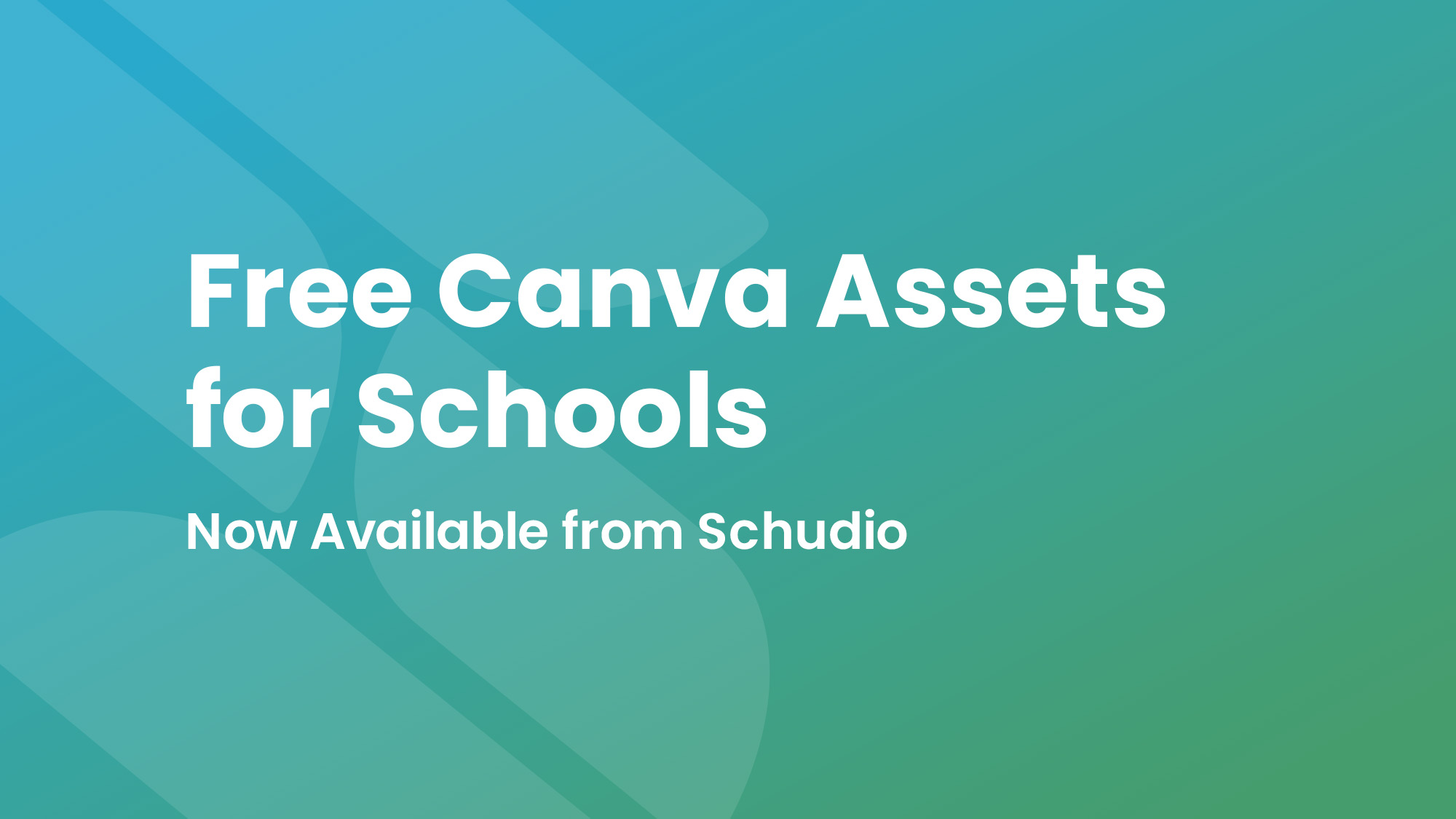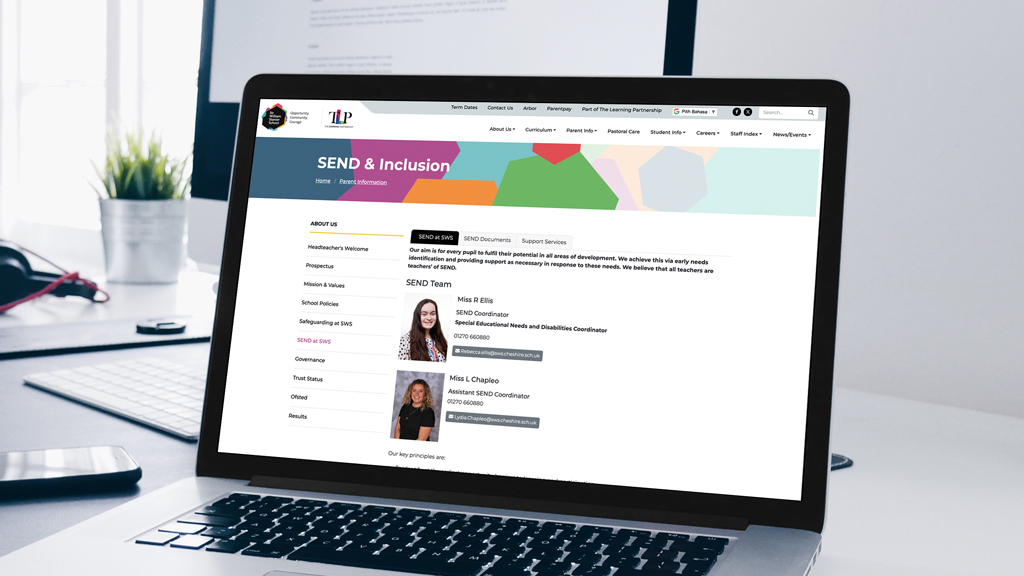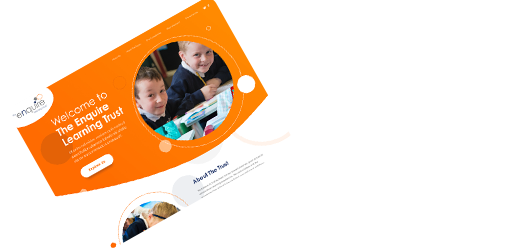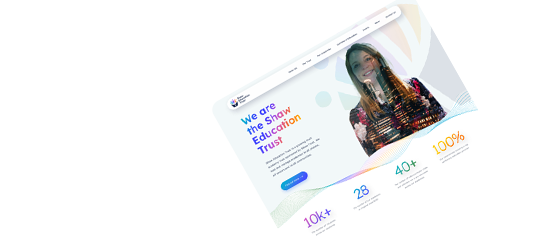Top Features of an Effective School Website Design
Top Features of an Effective School Website Design
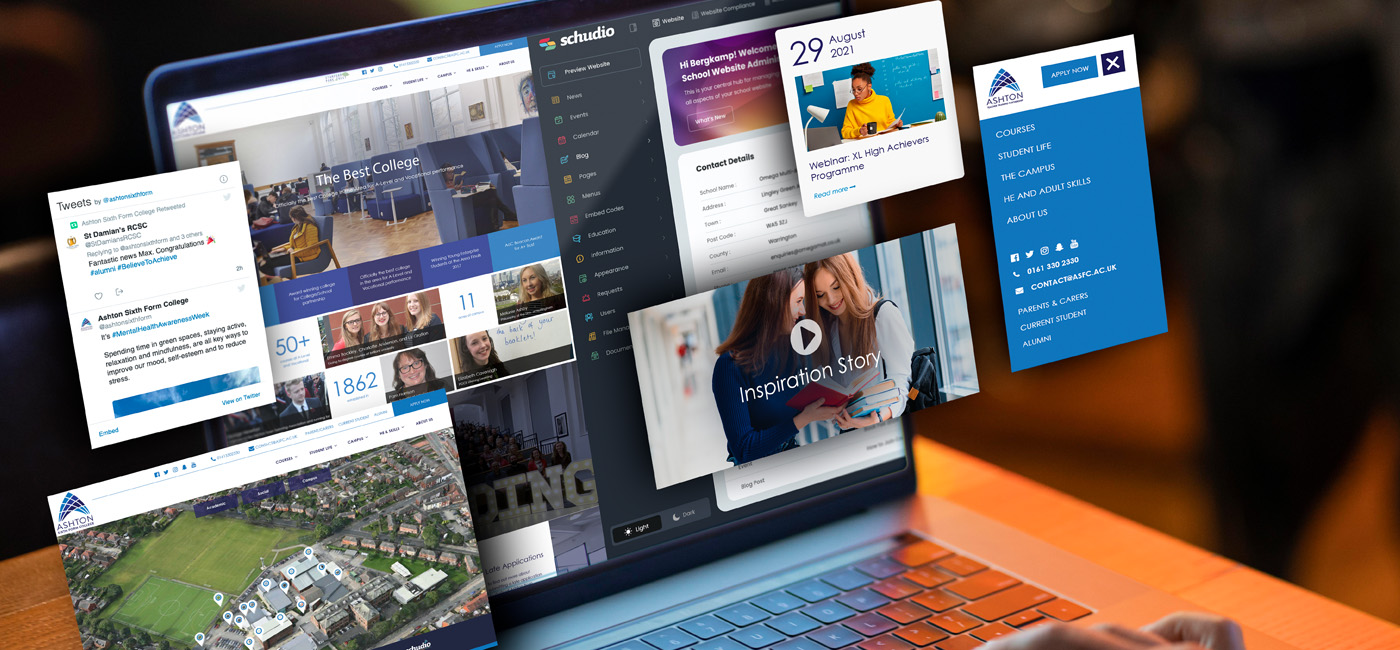
Top Features of an Effective School Website Design
Are you aiming to create or improve a school website that truly serves your community? The success of a school website depends on its ability to engage users, convey clear information, and provide ease of access. This article strips away the complexity of identifying the top features that hallmark an effective school website, ensuring you know exactly what’s needed to connect deeply with students, parents, and staff.
Key Takeaways
- An Effective school website design balances aesthetics with functionality, emphasising user-friendly navigation, engaging visuals that embody the school’s identity, and clear communication of the school’s values and unique attributes.
- Specialised Content Management Systems (such as the Schudio CMS) are crucial for school website management. They should offer intuitive use, wide customisation options, and features tailored for Multi-Academy Trusts, enabling staff to update and maintain content efficiently.
- School websites must prioritise school website compliance with legal requirements and accessibility guidelines, ensure up-to-date content, and provide ongoing support to manage and maintain a dynamic online presence effectively.
Primary and Secondary School Websites
The virtual face of any primary school is its website. Primary and secondary schools use their websites as platforms to establish a direct connection with families, which means they serve as digital hubs for students, parents, and the wider community. Designing effective school websites involves striking a balance between aesthetics and functionality. Engaging visuals, user-friendly navigation, and clear communication are the hallmarks of a successful school website design.
Visual elements should not only be attractive but also represent the unique personality and brand identity of the school. They should resonate with the young audience of students while also appealing to their parents and the broader community. But aesthetics alone don’t make for a great-looking website. The site must also be easy to navigate, with clear and straightforward paths that guide users to the information they need.
Communication is another critical aspect of school websites. The site should effectively communicate the school’s values and ethos, showcasing what makes it unique. Whether it’s the school’s commitment to academic excellence, its vibrant community spirit, or its extensive extracurricular offerings, these unique attributes should shine through on every page of the website.
Engaging Visuals
School website design greatly relies on the incorporation of engaging visuals. They highlight the school’s unique personality and brand identity, creating a strong first impression. The design process should focus on creating a visually appealing and user-friendly online environment. From the use of high-quality photography and video content to the creation of interactive elements, such visuals are not just about making the site look good. They communicate the school’s vision, highlight its achievements, and showcase its vibrant community. In this context, design websites play a crucial role in representing the essence of a school.
A well-designed website can excite visitors and make them eager to explore more, enhancing the school’s appeal to a wide audience.
User-Friendly Navigation
School websites must prioritise user-friendly navigation.
A straightforward homepage, consistent menu placement, clear calls-to-action, and common language for page names are vital for ensuring that all users can easily understand the navigation options. After all, an engaging and great-looking website won’t matter much if visitors can’t find the information they’re looking for. Inspectors say they spend up to 20 minutes looking around a school’s website to find the information they need. That is a VERY long time, and it shouldn’t take nearly that long to find anything on your website.
Clear Communication
School websites must convey the school’s vision and ethos effectively through clear communication. The website content should showcase the school’s uniqueness effectively, fostering strong partnerships with parents and the wider community. From communicating the school’s mission and values to highlighting its achievements and offerings, the website serves as a key platform for engagement and information dissemination.
In addition, it’s important to keep parents informed and engaged with the school’s progress and accomplishments, which can be achieved through regularly updated news stories, announcements, and newsletters.
Multi-Academy Trust Websites
Website design presents unique challenges for Multi-Academy Trusts (MATs). With multiple schools under their umbrella, MATs must ensure that their websites maintain consistent branding across all schools while providing the necessary tools for centralised communication and policy management. The design of Multi-Academy Trust websites should reflect the trust’s collective identity, bringing cohesion and unity to its online presence.
Establishing a unified identity across all schools within a MAT requires consistent branding. It promotes recognition and familiarity among the trust’s wider community. From logos and colour schemes to typography and imagery, every element of the website design contributes to creating a cohesive brand identity that resonates with the trust’s ethos and vision.
MAT websites also highlight the need to incorporate centralised and standardised communication tools and policy management features. These features ensure efficient and consistent communication across all schools in the trust. They also facilitate the distribution and implementation of trust-wide policies, ensuring that all member schools adhere to the same standards and regulations. The Schudio MAT Portal solves all these issues and a lot more for multi-academy trusts.
Consistent Branding
A Multi-Academy Trust’s online presence relies heavily on consistent branding. A clear brand identity, including a distinctive logo, consistent colour scheme, and uniform typography, is essential for consistency across all schools within the trust. This consistency extends beyond visual elements, encompassing the tone of voice, messaging, and overall user experience.
By developing detailed brand guidelines and ensuring proper implementation across all marketing collateral, MATs can maintain a cohesive and powerful brand identity that resonates with their audience.
Centralised Communication Tools
Operational efficiency in a Multi-Academy Trust hinges on efficient and consistent communication. Centralised communication systems, such as MAT intranets, play a crucial role in streamlining communications across all schools in the trust. Some benefits of using MAT intranets include:
- Instant notifications
- Distribution of tailored content
- Standardised access to information
- Ensuring that all member schools are on the same page
These tools help improve communication and collaboration within the trust, leading to better operational efficiency.
By enabling the efficient creation and sharing of marketing materials that align with the trust’s branding, these tools also enhance the trust’s coherent communication strategy.
Policy Management Features
The integration of policy management, a significant aspect of managing a Multi-Academy Trust, into the trust’s website is essential. Centralised policy distribution ensures that all member schools receive policy updates simultaneously, maintaining consistency in policy implementation. A well-organised policy section on the MAT website not only enhances transparency but also provides easy access to governance documents and compliance information.
By leveraging these features, MATs can manage their policies effectively, ensuring unified practices across all schools.
Schudio provides a range of unique features that streamline all these processes for MATs, and a whole lot more.
Independent and Private School Websites
The websites of independent and private schools, which often offer unique educational experiences, should mirror this uniqueness. These schools have the opportunity to showcase their unique offerings, attract prospective families, and maximize competitive opportunities. Through engaging design and tailored content, independent and private school websites can effectively represent the school’s brand identity, engage their target audience, and stand out in the competitive educational sector.
Showcasing their unique offerings is one of the key ways independent and private schools can set themselves apart. Whether it’s a specialised program, a robust arts curriculum, or a strong focus on STEM education, these unique offerings should be prominently displayed on the school’s website. By leveraging visual elements and engaging content, schools can highlight these offerings, making them stand out to prospective parents and students.
Independent and private school websites also play a vital role in attracting prospective families. A welcoming, inclusive community, user-generated content, and a well-structured website can help schools make a positive first impression on prospective families. By building an email list, schools can maintain direct contact with prospective families, sending personalized newsletters and announcements to their inboxes.
Showcasing Unique Offerings
Independent schools’ websites should effectively showcase the unique educational experiences they have the capacity to offer. Whether it’s through high-quality images, professional photography, or engaging video content, the school’s unique offerings should be prominently displayed. Animated buttons, custom design elements, and interactive features can create a unique and memorable user experience that embodies the school’s brand and values.
By consistently publishing insightful content, private schools can establish thought leadership, attracting families looking for innovative educational approaches.
Attracting Prospective Families
Independent and private schools need to create a welcoming community to attract prospective families. User-generated content, such as testimonials and success stories, provide authentic social proof and relatable content that addresses the needs and interests of prospective students and parents.
Virtual visits and engaging content like blogs and videos can boost trust and result in more enrollments. Building and leveraging an email list also enables schools to maintain direct contact with prospective families, keeping them engaged and informed.
Maximising Competitive Opportunities
In the competitive environment in which independent and private schools operate, their websites can play a pivotal role in seizing competitive opportunities. Schools can create a compelling online presence that distinguishes them from their competitors by strategically combining distinctive website design features, showcasing unique strengths, and leveraging social media.
This involves incorporating custom design elements and features into the website design, highlighting the school’s history and programs, and maintaining a robust social media presence.
Special Needs and SEN School Websites
Creating an inclusive online environment is a crucial role played by Special Needs and SEN school websites. These websites should prioritize accessibility features, tailored content, and a focus on individual student needs. With the right design and content, these websites can effectively cater to the diverse needs and abilities of SEN students, providing them with a positive and inclusive online experience.
SEN school websites require the integration of accessibility features. These include:
- Options to adjust text size
- Colour contrast settings
- Text-to-speech functionality
- Compatibility with screen readers and other assistive technologies
By prioritising accessibility, SEN schools can ensure that their websites are accessible to all students, staff, and parents, regardless of their abilities or needs.
Another key aspect of SEN school websites is the provision of tailored content. This includes showcasing specialized programs, therapies, and support services available at the school. Visual cues and resources that cater to diverse needs and abilities can help SEN students engage with the website content in a meaningful way.
Accessibility Features
In the design of Special Needs and SEN schools, as with all school websites, accessibility plays a crucial role. With options to adjust text size, colour contrast, and text-to-speech features, these websites can cater to a wide range of needs and abilities. Compatibility with screen readers and other assistive technologies ensures that the website is accessible to all users.
In addition, a linear, logical layout can aid users with cognitive disabilities. At the same time, advanced features such as dyslexia-friendly presentation, high contrast, and alternative text spacing can enhance the user experience for SEN students.
Tailored Content
SEN school websites use tailored content to highlight the specialised programs, therapies, and support services the school offers. Visual cues paired with concepts can aid information retention, which is particularly beneficial in a SEN educational context. Specific sections within the website can highlight the school’s individualised programming and support systems, demonstrating the school’s commitment to catering to students’ diverse needs.
Including resources such as staff profiles and parent resources can provide detailed information and support, contributing to the website’s overall effectiveness.
Focus on Individual Student Needs
A strong emphasis on individual student needs should be a feature of Special Needs and SEN school websites. This involves featuring individualized learning plans and resources that cater to diverse needs and abilities. It’s important for these websites to communicate a desire to partner with families in caring for and educating their child.
By highlighting the school’s ability to meet the social and emotional needs of students, in addition to their academic requirements, SEN school websites can effectively cater to the unique needs of their students.
Content Management Systems for School Websites
In the maintenance and management of website content, Content Management Systems (CMS) for school websites play a crucial role. The right CMS should offer ease of use, customization options, and features built specifically for Multi-Academy Trusts. It should enable staff to manage website content without the need for technical expertise, allowing for seamless updates and maintenance of the website.
CMS platforms offer several benefits for schools, including:
- Ease of use through intuitive editors, comprehensive training, and support for various content types
- The ability for staff to manage website content without technical expertise
- Customization options to personalize the website through tailored solutions, such as customizing the layout, integrating plug-ins, and enhancing website security.
CMS software for Multi-Academy Trusts should include features specifically designed for such Trusts. These features, such as Trust Portals and RAG reports, enable efficient management and reporting of the performance of all academy websites centrally.
Ease of Use
Ease of use is a fundamental aspect of CMS platforms. With intuitive editors and full training provided, staff can manage website content without the need for technical expertise. CMS platforms are designed to be user-friendly, with straightforward interfaces, drag-and-drop editing, and multi-user access. These features facilitate content updates across staff roles, making the whole process efficient and manageable.
Customisation Options
Customisation options in CMS platforms allow schools to personalize their website to their specific needs. This includes customising the layout, integrating a wide range of plug-ins, and enhancing website security.
For Multi Academy Trusts – Software that includes features built just for Trusts
CMS software for Multi-Academy Trusts should include features specifically designed for such Trusts. These features include:
- Trust Portals, CPDL management and RAG reports, which enable efficient management and reporting of the performance of all academy websites centrally
- A Talent and Capacity Register, which provides important resources for managing the trust effectively
- Student Profiles, which help track and manage student information
- A Knowledgebase which serves as a repository of important information for the trust
- Distributed content from a central portal across all websites within the MAT.
These features are essential for efficient management and reporting within a Multi-Academy Trust.
With these features, MATs can ensure efficient and consistent management of their websites across all member schools.
School Website Compliance
School website design must place a crucial emphasis on compliance. Schools must ensure that their websites adhere to legal requirements and guidelines, ensuring that the website is accessible, informative, and up-to-date. This involves regularly reviewing and updating website content, ensuring accessibility for all users, and meeting data protection and privacy regulations.
Ensuring compliance not only protects the school from potential legal issues but also contributes to an effective and user-friendly website.
Ongoing Support
A successful school website relies heavily on ongoing support. Support teams play a key role in:
- Assisting with the website set-up process
- Offering ongoing support
- Providing engaging designs
- Offering easy-to-use tools
- Providing training to ensure that school staff are equipped with the necessary skills and knowledge to manage the website effectively.
With the right support, schools can ensure that their website remains up-to-date, engaging, and representative of their unique identity and ethos by working with a partner who understands how to address the needs of a school directly.
Summary
In conclusion, effective school website design involves much more than just aesthetics. It requires careful consideration of the school’s unique identity and ethos, the needs and abilities of its students, and the expectations of parents and the wider community. Whether it’s a primary or secondary school, a Multi-Academy Trust, an independent or private school, or a Special Needs and SEN school, the website should reflect the school’s unique offerings and values. With the right CMS, ongoing support, and adherence to compliance requirements, schools can create powerful online presences that engage, inform, and inspire.



